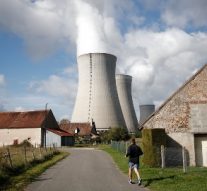
The new energy plan for France
Energy 14 February 2022Estimated time of reading: ~ 3 minutes
President Emmanuel Macron last Thursday outlined his vision for France’s energy future and announced a major plan for the construction of at least six new nuclear reactors by state-controlled energy giant Electricite de France (EDF) while on a campaign visit to a turbine factory in the eastern industrial city of Belfort, just weeks ahead of a presidential election in April.
The third-generation pressurized water reactors (EPR) facilities are to be completed by 2050. Macron also said he was looking into the possibility of building a further eight. The whole project is being pitched under the motto of reducing France’s greenhouse gas emissions.
Beyond nuclear power plans, Macron said 50 offshore wind parks were slated for construction — France currently has none, despite an abundance of coastline — and that onshore solar capacity would double and hydroelectric facilities would also not be forgotten.
Macron’s main emphasis, however, was on nuclear energy, a particular point of pride with the French, providing roughly 70% of the nation’s energy.
Despite concern about the enormous cost and complexity of building new nuclear power reactors, Macron showed his support for nuclear energy as ecologically friendly and economically viable option.
Last Thursday, under pressure from the French government, EDF announced that it had agreed to buy back GE’s nuclear turbine branch for $200 million (€175 million euros).
EDF, which is heavily indebted, has faced difficulties in trying to build its latest-generation EPR reactors in separate projects in France, Britain and Finland.
The company estimates that it can build six of its reactors for France within 15 years at a cost of €50 billion ($57 billion).
Currently, EDF’s flagship French project in the northern city of Flamanville — a prototype for the plants Macron spoke of — is running four times over its €3.3 billion budget and 11 years behind schedule.
Though nuclear endeavors tend to be extremely costly, France is decidedly more relaxed about the prospects of financing such projects after it was recently able to convince the European Commission to classify nuclear power as “green” in its taxonomy guide for investors — meaning that it is considered environmentally friendly, and thus investment-worthy.
Currently, more than a dozen of France’s 56 aging nuclear reactors are offline — seven for maintenance and five for serious corrosion damage. Overall output has dropped to around 55% to 60% of capacity. France also lags behind the rest of Europe when it comes to investments into renewable energy sources.
In 2021, France’s nuclear authority agreed to extend the operational lifetime of the country’s 32 oldest reactors by a decade, to 50 years. Since most of France’s reactors were built in the 1980s, they could be shut down in the 2030s.
Paris argues that the new plan will maintain energy supplies amid increasing demand, while at the same time allowing France to achieve carbon neutrality by 2050 and help reduce dependency on imported fossil fuels.
Written by: Federico Lioy






